Emigration, Titanic and Lusitania at Cobh, Ireland
We’ve spent a couple of nights in Cobh, a 30 minute drive from Cork on Ireland’s south coast. Cobh’s proven a fascinating, if sobering place. This is the last place millions of Irish emigrants stood on home soil, and the last port the Titanic visited before its fateful sailing across the Atlantic. Cobh’s also the port the Lusitania survivors and victims were brought after its sinking by German submarine in 1915.
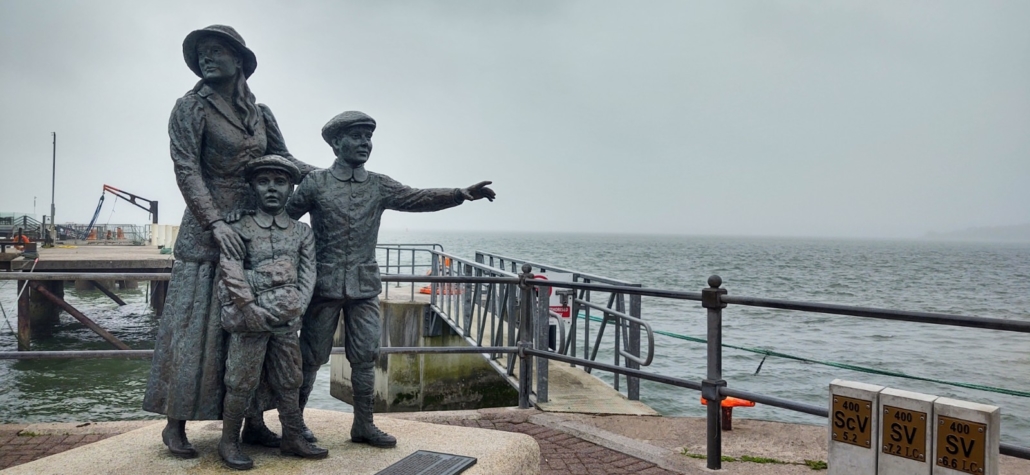
A quick aside: Cobh was originally named Cove (they’re pronounced the same), and later Queenstown after a visit by Queen Victoria. Following independance from the UK, the council voted to change the name back to Cove, opting to use the Irish form of the name: Cobh.
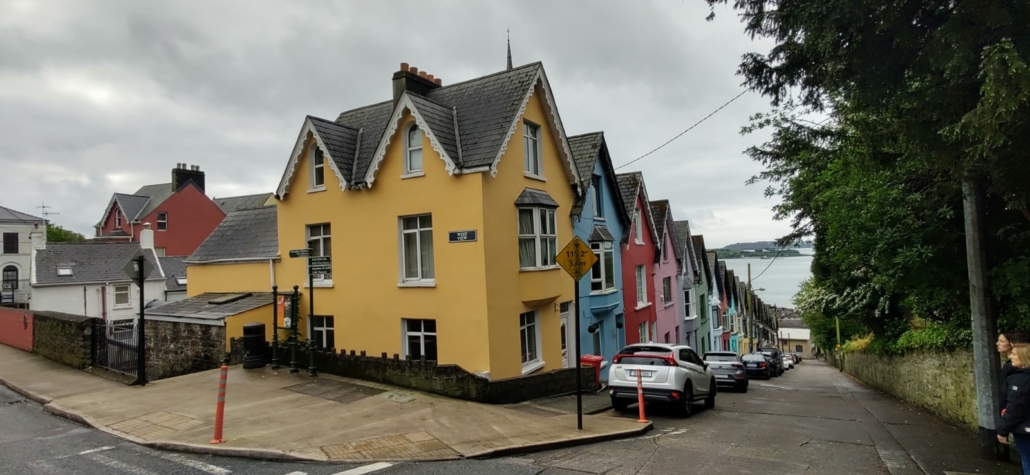
Cobh’s Motorhome Aire
The authorities in Cobh have created a fabulously-sited motorhome aire, a five minute walk along the sea front into the town (N51.847015, W8.307782). All of the thirty spaces face directly out to sea, part of the second largest natural harbour in the world, after Sydney.
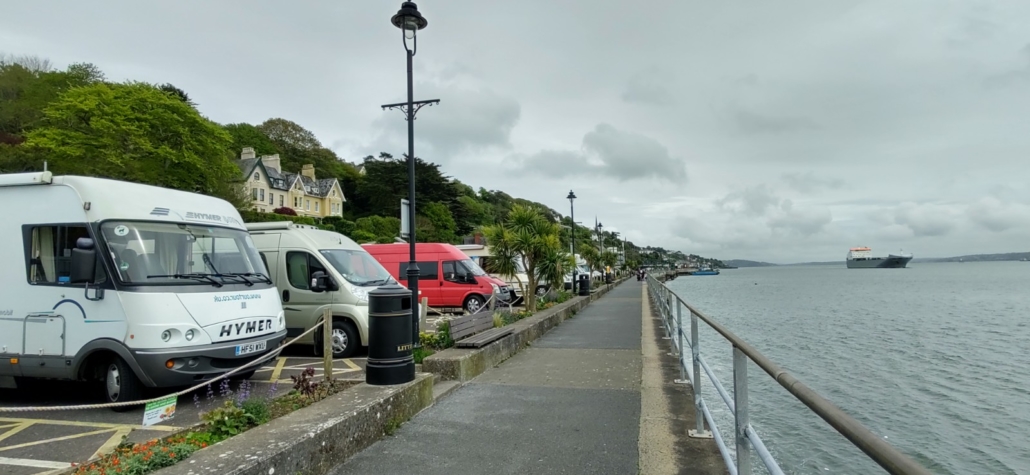
The other half of windscreen’s taken up by a grey sky, intermittently dumping rain on us, with Haulbowline Island dividing the two. The island’s the headquarters of the Irish Naval Service, having once been a stronghold of the Royal Navy. We can see the grey sides of warships at anchor over there.
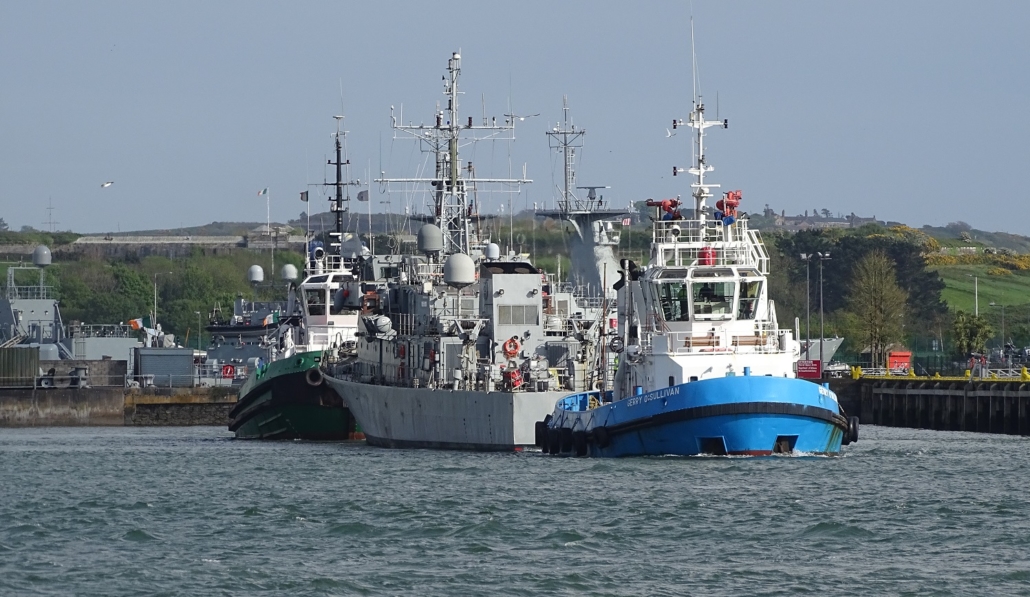
We can also just make out the green of Spike Island, one-time fortress and prison and now a tourist attraction. Every now and again a huge merchant ship slides past, carrying cargo in and out of the port.
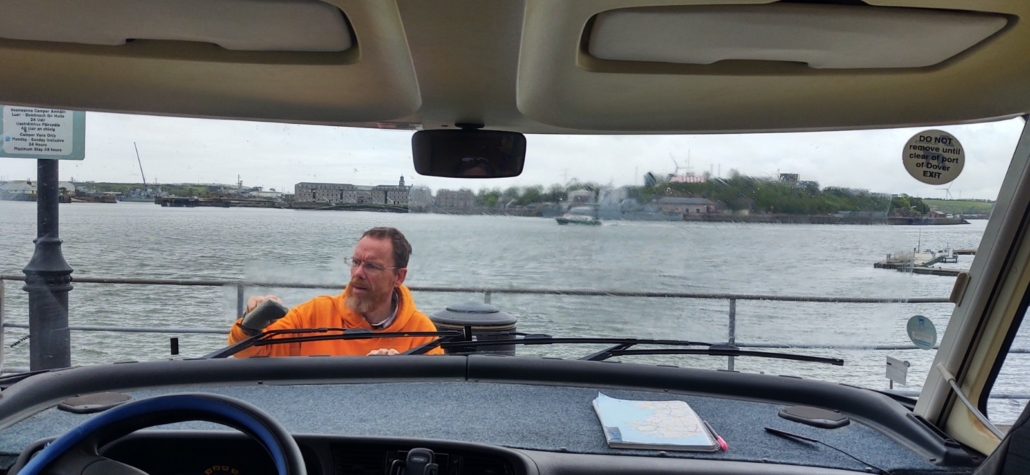
It costs €10 per 24 hours to stay here including all services except electrical hook-up. We’ve been off-grid for a week now, and our 7-year-old leisure batteries gave up last night, the inverter howling and a flashing red light on our control panel as we dropped below 12V. After a minor panic Ju remembered we’ve the Jackery we were given to recharge from, so we’ve used that to charge up the batteries again until we get to a campsite.
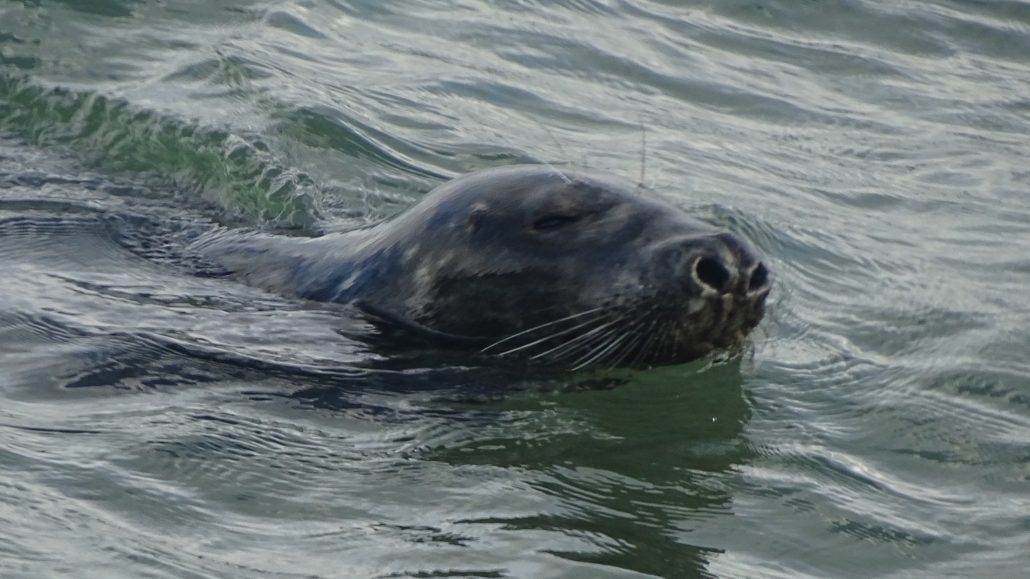
There’s at least a 2m gap between vans, which is far, far more space than many of the aires we’ve visited across Europe! There are recycling bins too, but as we’re discovering across Ireland, only glass, tins and drinking cans are accepted. As far as we can tell, you have to take plastic to a recycling centre and pay if you don’t want it to go into landfill. Everywhere we’ve been so far, the bins for general waste are the ones with tiny holes, so you have to feed your rubbish in a bit at a time.
The Cobh Heritage Centre, The Queenstown Story
A short walk along the quayside from the aire’s the Cobh Heritage Centre. It looked interesting to us so after we’d got parked up and had a cuppa, we had a walk over and nipped inside. It’s a fairly big place, not expensive to visit and there’s an absolute ton of information in there.
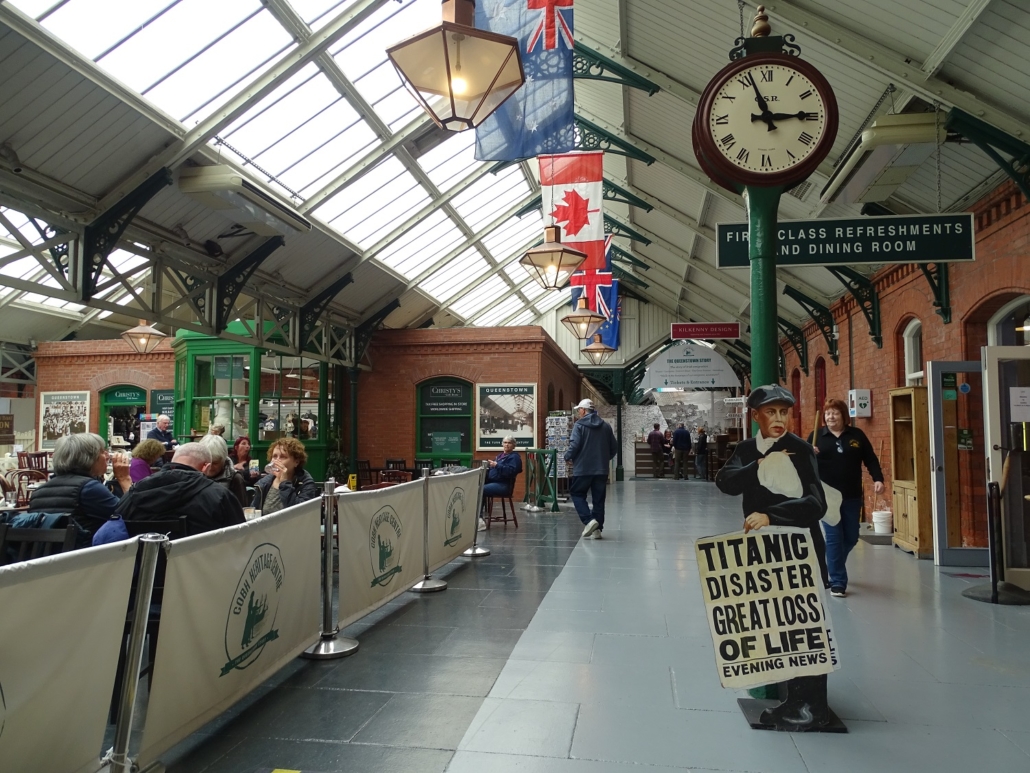
If you’re interesting in looking up Irish ancestors who may have left through the port, there’s a research facility available. Otherwise (like us), you’ll be treated to a hefty amount of information about Irish emigration, the Great Famine, the Titanic and Lusitania.
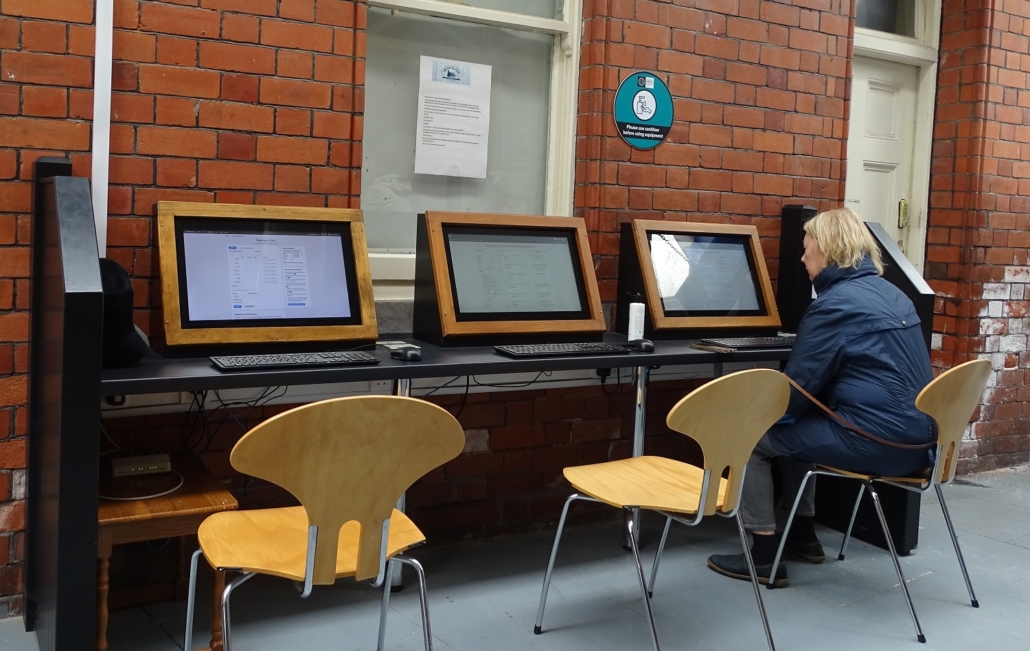
The centre opened 30 years ago, and it’s feeling a tad dated here and there. There are some interactive screens, but they don’t do much other than show you more text to go with that printed on information boards liberally spread around. The dummies placed in various scenes intended to convey grim circumstances are getting worn out. More than once they raised a wry grin, instead of invoking introspection:
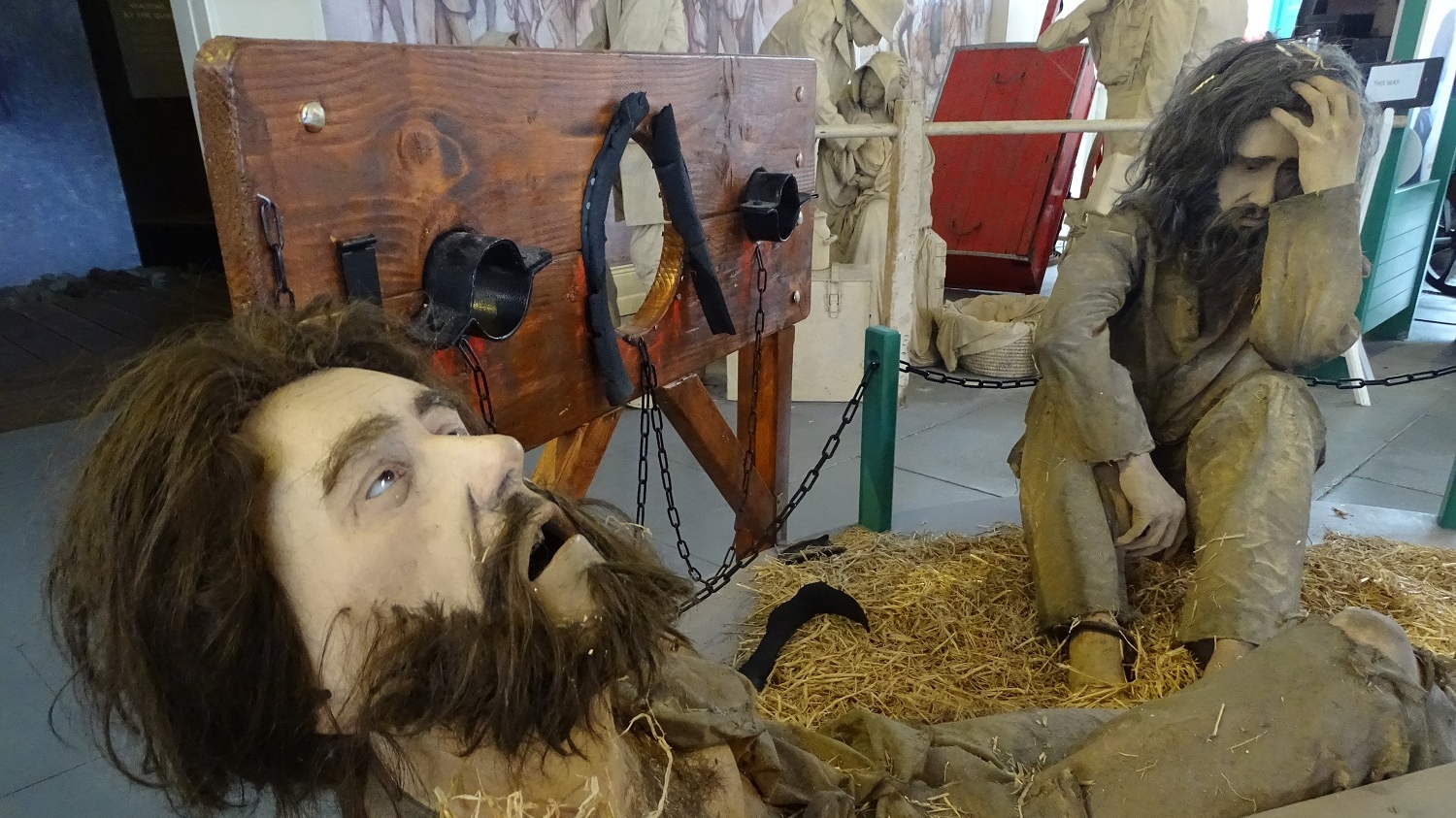
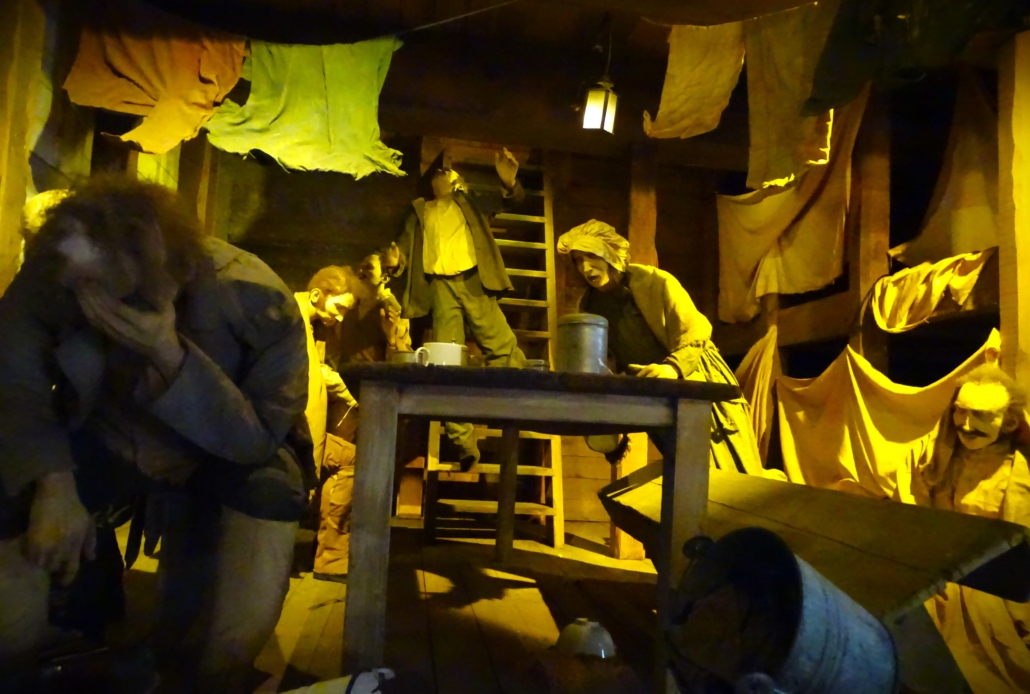
That minor criticism aside, the centre did a great job of explaining the fate of the Irish under British rule as part of the Empire. Saturday was King Charles’ III coronation, but you really wouldn’t know it here in Southern Ireland. Having spent a couple of hours reading about how Ireland was treated by Britain over the past couple of hundred years, including during the horrific famine years, I can’t say I’m much surprised they weren’t celebrating in the streets. The run manager for the Parkrun on Sunday half-joked maybe we’d come over the sea just to avoid the coronation?
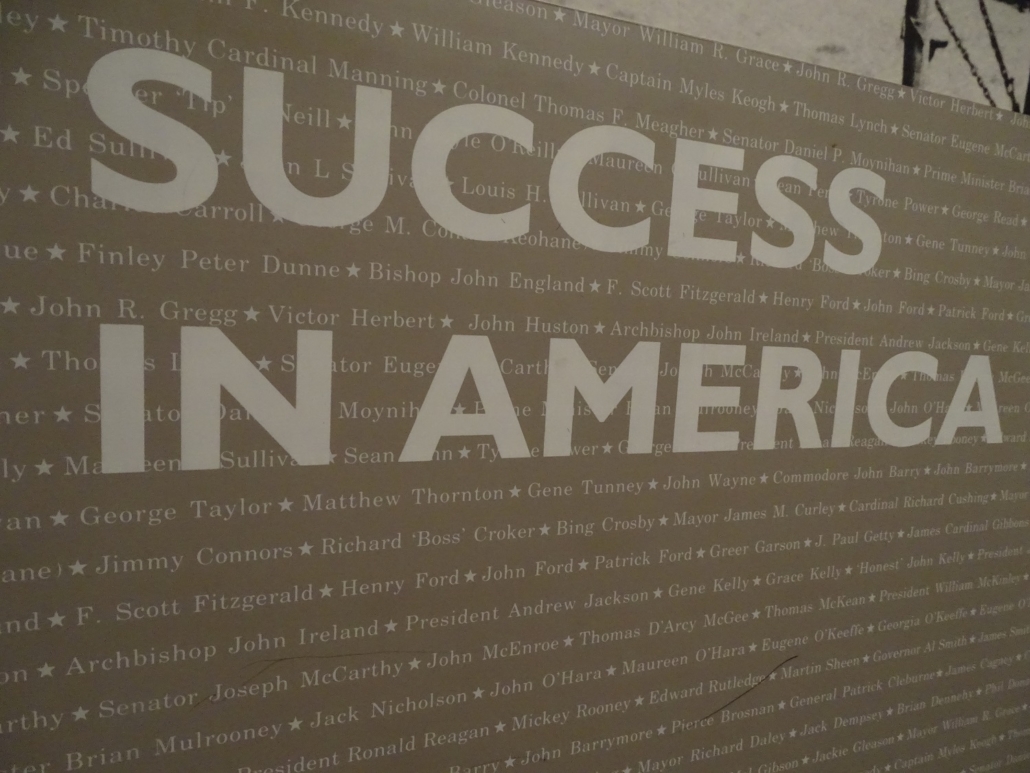
Millions of Irish were forced to emigrate due to poverty, starvation or from being convicted of a crime (political or otherwise). Around a million who were unable to leave died during the famine when blight caused the potato harvest to fail. The attitudes from the ruling British class were, on the whole, callous. Ireland was treated as a source of income, and the government felt little moral duty to help avoid mass starvation. The upper class of the time blamed the people rather than the fact they’d no food:
“The real difficulty lies with the people themselves. They are always in the mud…their idleness and helplessness can hardly be believed.”
Lord Clarendon, September 1847.
Lots more similar quotes here. As well as discussing the famine and other causes of emigration, the centre has a section on the Titanic, which last stopped here at Cobh, at anchor a few km out to sea. Four days after leaving it infamously sank in the frigid Atlantic. Seven passengers disembarked at Cobh. That includes one lad on leave from work who had an offer from a benefactor to pay for his passage, but his employer insisted he get off the ship. Lucky swine. The museum offers lots of personal stories like that, adding a spark of humanity to the overall enormity of it all.
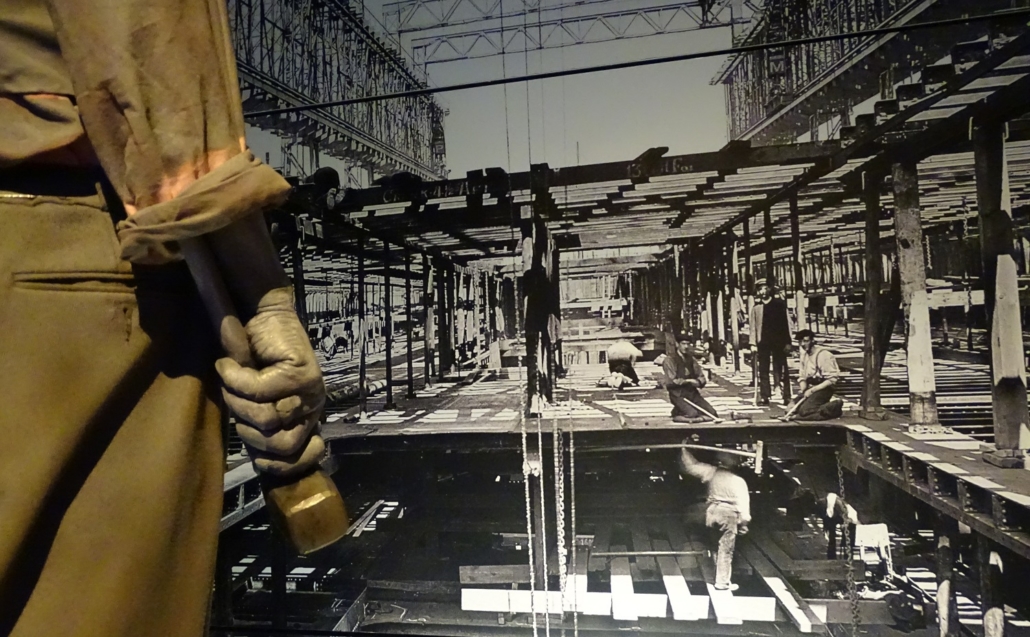
There’s also a Titanic Museum here in Cobh, but after visiting the Heritage Centre we felt we’d read enough about the famous ship’s stopover here. The Heritage Centre also has a section on the Lusitania, the passenger ship sunk by a German torpedo in 1915, killing almost 2,000 people. We had a walk to the town’s old graveyard and stood beside the three mass graves some of the victims were buried in, an eerie feeling.
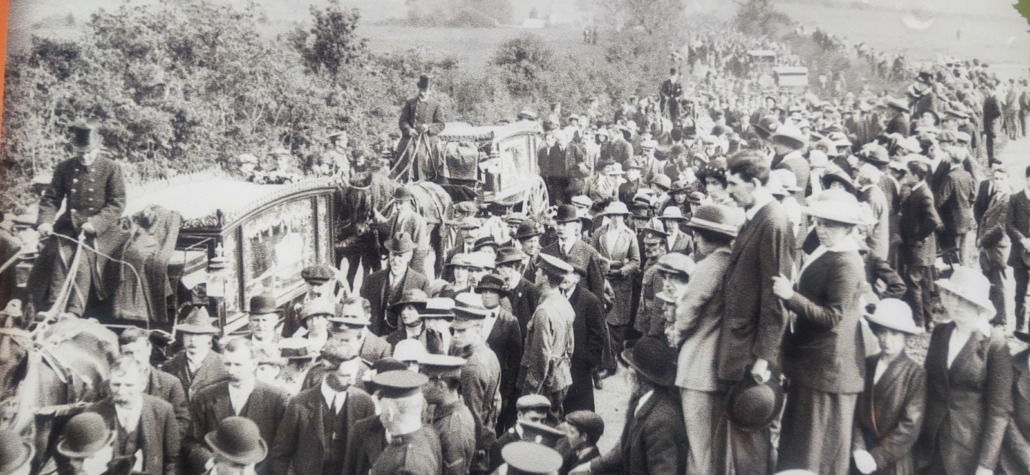
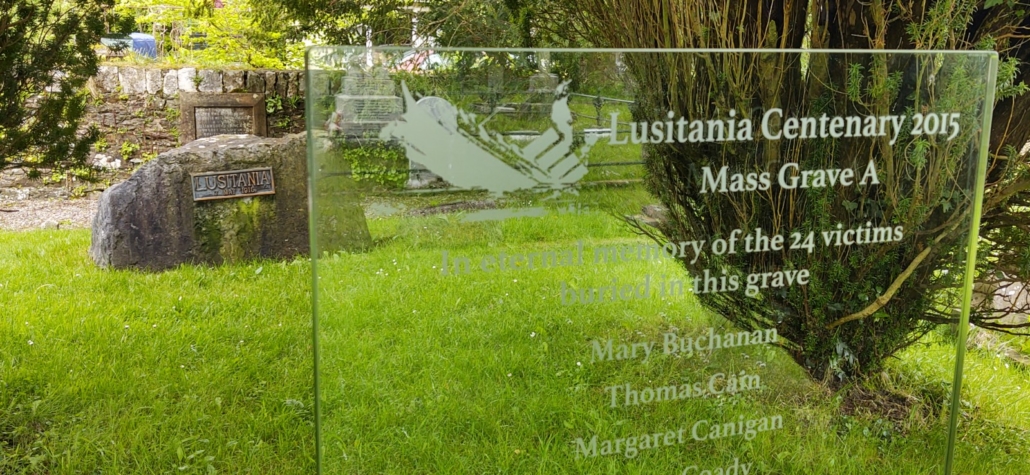
The graveyard is a couple of miles inland from the aire, right next to Lidl, ALDI and SuperValu if you’re in need of groceries, or there’s a petrol station over the road with washer-dryers. It has other famous figures including Robert Forde, an Antarctic explorer with Captain Scott and Jack Doyle, an Irish boxer known as the Gorgeous Gael. It was well worth the walk up from the town to visit and pay our respects.

The Town of Cobh
The pretty town of Cobh’s a stone’s throw away from the aire, with the old offices of the White Star Line and Cunards down by the water. Cruise ships stop here about 100 times a year, there’s one due tomorrow, and they look enormous! They dock near the train station, where you can grab a 30 minute train into Cork if you fancy.
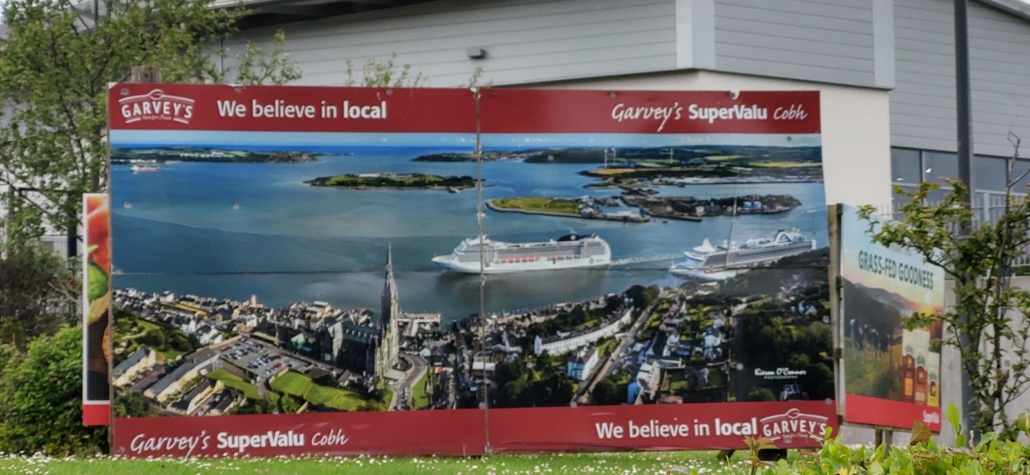
The huge St Colman’s Cathedral occupies a prominent spot with great views over the water and the lower parts of the town. Only completed in 1919, it looks much older.
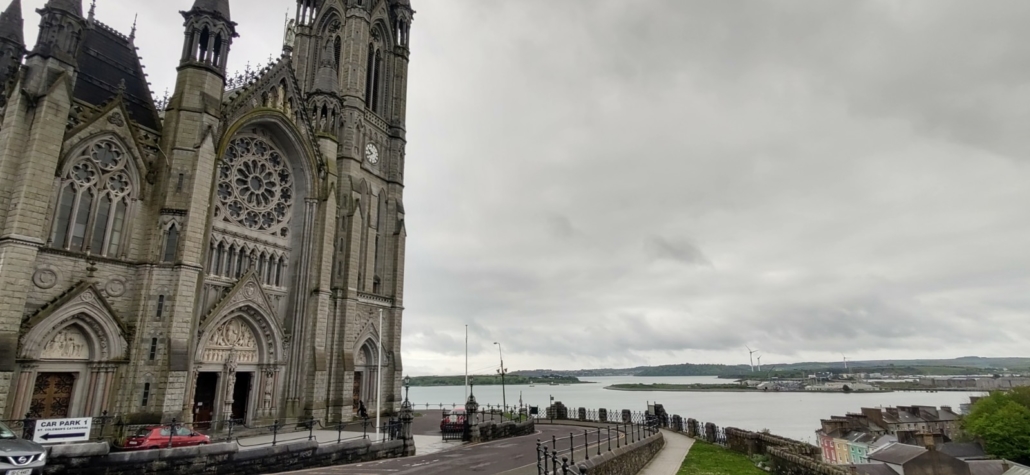
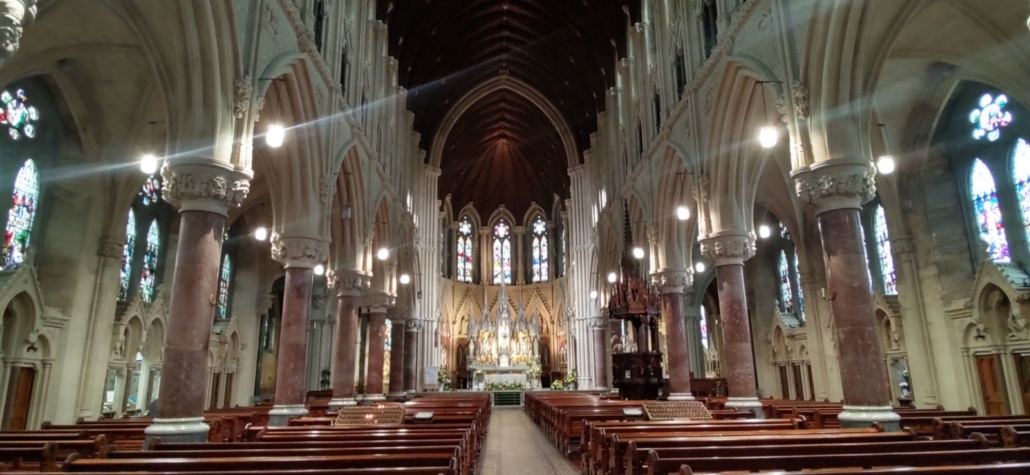
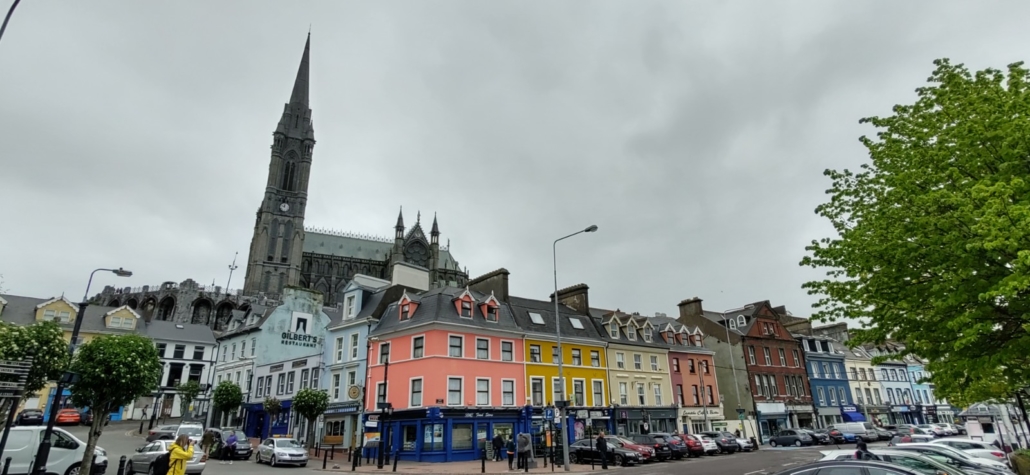
There are plenty of pubs, shops and cafes to restore yourself after some serious sight-seeing. Failing that, it’s only a few minute’s walk back to the van to boil the kettle and tuck into a biscuit looking out over the sea.
Right-o! The plan now is to head west, onto the southern end of the Wild Atlantic Way, and to start exploring Ireland’s Munster coast. From here on in, the roads look narrow folks, wish us luck!
Cheers, Jay

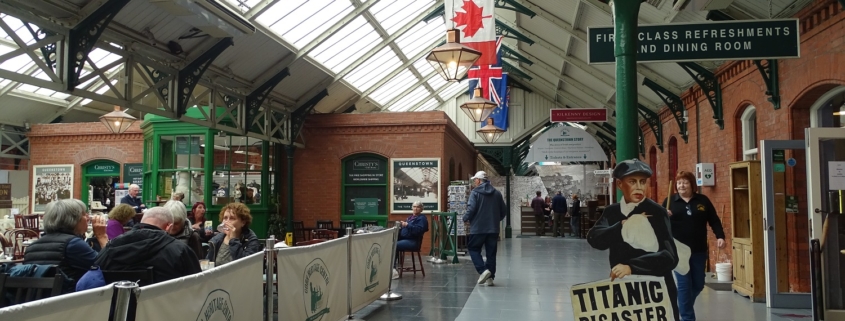
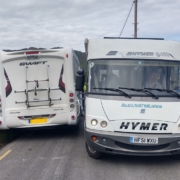
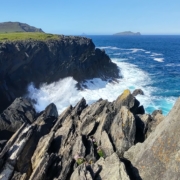
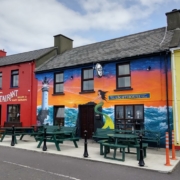
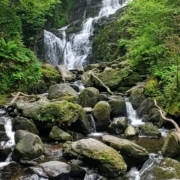
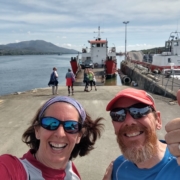
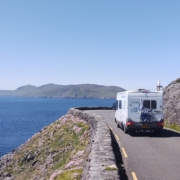


So well described, felt like we were there again.
Hope you make it to Ellis Island one day, they even have an RV aire about the same walking distance as at Cobh, almost under the Statue of Liberty! so no excuses for not visiting.